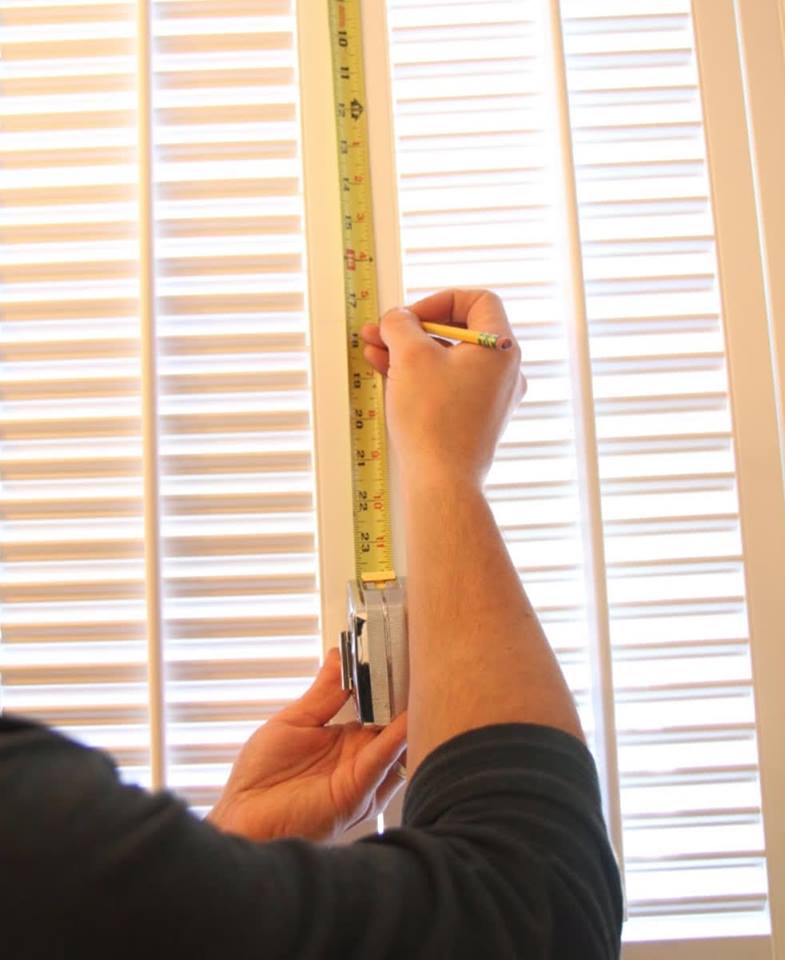
As you explore your options for hardwood plantation shutters, you’ll also come across a variety of unfamiliar words and descriptions. From louvers to rails, there are certain words associated with plantation shutters that you need to know for the best installation experience. Here’s a breakdown of some of the most heard words and phrases:
Louver
This is most likely the word that you’ll come across the most often when researching plantation shutters. The louvers are the main part of the plantation shutter. You’ll immediately recognize louvers as the movable wooden slats that run horizontally across the shutter and filter in or out sunlight to allow for the perfect ambiance.
Louvers come in different shapes and sizes based on your own preference. At Shenandoah Shutters, you can choose from three different louver sizes. Our louvers are available in 2.5”, 3.5”, or 4.5” sizes. The middle size tends to be the most common choice for custom built plantation shutters, but you might prefer the smallest size if you also have small windows. If you have large windows, or if you just prefer the style of larger louvers, then you might choose to select the 4.5” style. The larger the louver size, the more open your view can be, as well.
No matter what size louver you choose, your plantation shutters will be classically elegant and provide a warm atmosphere for your home. The same is true of plantation shutter shapes. There are flat and contour shape choices at Shenandoah Shutters.
Flat louvers are exactly as they sound. They are flat on top and on bottom. A contoured louver, meanwhile, is reminiscent of an airplane’s wings. Contoured louvers start out small, widen in the middle, and then are small again.
Rail
Rails are the long, horizontal wood pieces that can be found at the bottom and top of each plantation shutter panel. Some plantation shutters, especially double hung windows, may also have a rail in the center, or a divider rail. A divider rail gives you even more freedom for light control, as you can have your louvers set one way on top and another way on the bottom. The divider rail is also a popular choice for its added privacy benefits, as you can have your lower louvers closed for privacy while your top louvers stream in the sunny day.
Tilt Rod
The tilt rod is what allows the louvers to open and close. There are single tilt rods, hidden tilt rods, and split tilt rods.
A single tilt rod is the long, visible rod in the middle of the plantation shutter that goes from the top to the bottom of the panel. It attaches each louver. A hidden tilt rod, meanwhile, is hidden behind the panels, but has the same functionality. Hidden tilt rods allow for a more modern look, while single tilt rods allow for a more traditional plantation shutter appearance. A split tilt rod is similar to the divider rail in that it also allows for independent light control of the top and bottom shutters. However, the split tilt rod doesn’t actually use a rail.
Stile
Stiles are the vertical wood pieces that are on each side of the louvers. Stiles hold the mounted louvers with louver pins.
Shadowbox
A shadowbox accommodates your door handle, so that plantation shutters can be added to your French door. Since we custom build our plantation shutters, we can easily outfit your unique French door.
Cafe Shutter
Cafe shutters are a popular shutter style, especially in kitchens and breakfast nooks. Cafe shutters have plantation shutters on the bottom and an open window at the top. You can install a valance or other fabric window treatment above the open window. This is another term that is exactly what it sounds like, with the end result looking like the windows of fine cafes. Of course, this plantation shutter style looks equally as beautiful in rooms other than the kitchen.
Slider
A slider is a design for your sliding glass door. With a slider, you can have plantation shutters on your sliding door without sacrificing your ability to slide the door open and shut.
Our Patented Softedge Design
Another term that we’re thrilled for you to know is Softedge, the name for our very own, patented design concept. With the Softedge, you can have your hinges discreetly hidden in a style that is similar to European cabinetry. European cabinetry doesn’t use bulky frames and maintains a clean, harmonious focus, just like our Softedge design. While this style is ideal for tilt-in and casement windows, it is also a popular choice for a variety of other window types. The Softedge is our way of adding another modern component to classically elegant plantation shutters.
Getting to Know Shenandoah Shutters
These are just some of the most commonly used terms at Shenandoah Shutters. Your design consultant will be happy to guide you through the terminology and options to find the plantation shutter design plan that is right for your home. You can also visit our showroom and woodshop in Richmond, just a few hours or less away from our service areas. Since we’re locally owned and operated, you’ll be able to view our products and process firsthand.
With decades of experience, our woodworkers can craft a plantation shutter for any window size or shape. We have solutions for even the most difficult installations. Give us a call or contact us online today to discuss your plantation shutter needs. We’ll set up a free, in-home design consultation and estimate.
At Shenandoah Shutters, we use only the finest American woods to build our plantation shutters. No plastics or vinyl here. Our woods of choice are yellow poplar for cream interior shutters and basswood for stained plantation shutters, as these woods provide for a vibrant, rich color. Of course, you’re welcome to request a specialty wood, like cherry, oak, or mahogany, to match your existing furniture. We can also provide a custom color.
